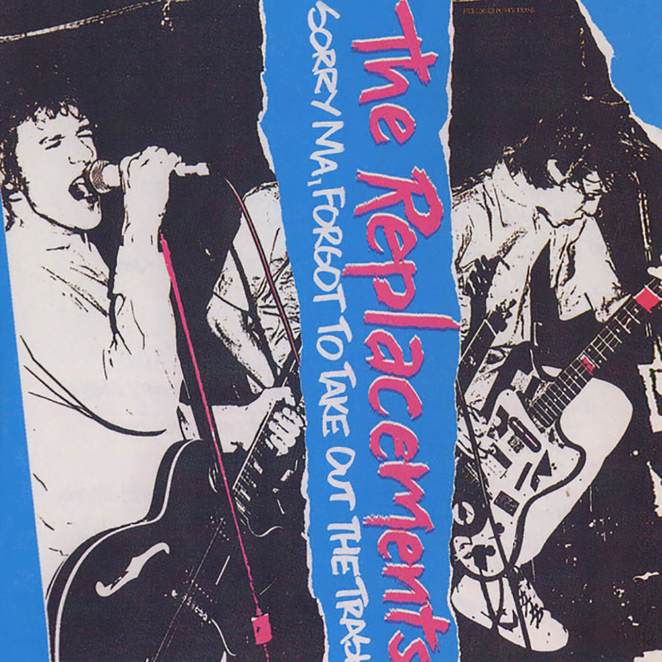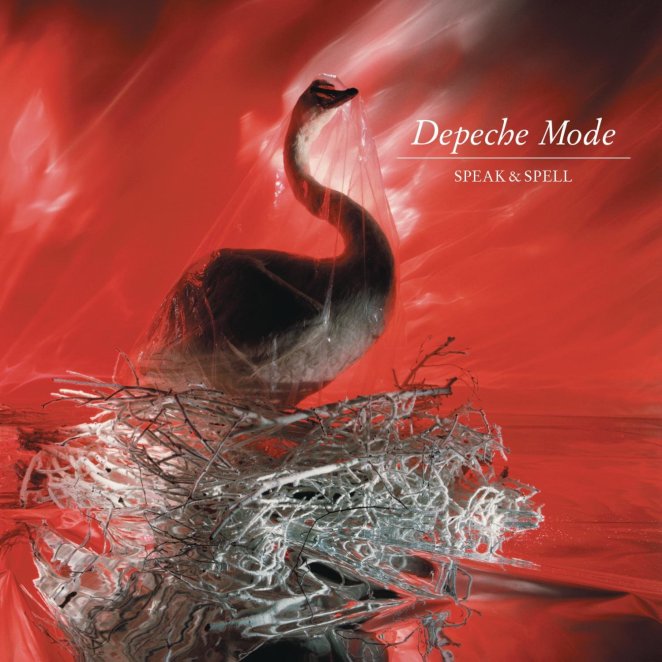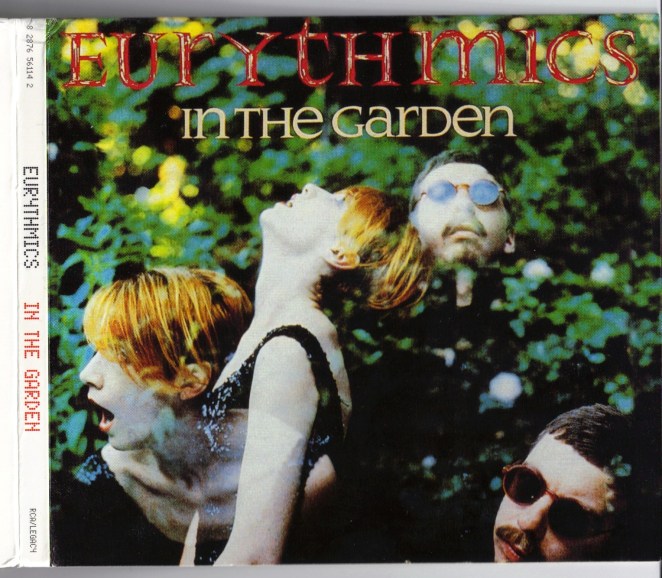In the year 1981, the Oscar went to Chariots of Fire for Best Picture. Dallas, The Jeffersons, Three’s Company, and The Dukes of Hazzard were all over the tube, and Kim Carnes’ “Bette Davis Eyes” was getting good airplay. Then, on the cusp of 1980s pop culture, this year in particular captured a moment in time, marking a paradigm shift in music as rock, specifically punk, filtered through synth-pop waves and the start of the career of many then-new artists—some who broke from their respective bands to go solo for the first time (Stevie Nicks, Phil Collins)—who have their place as pop culture icons 40 years later.
Videos by American Songwriter
Here we take a look at some of the debut albums, in no particular order, by artists who left their first indelible mark across rock, pop, punk, and beyond four decades ago.
The Go-Gos / Beauty and the Beat

By 1978, The Go-Gos were entwined in the Los Angeles punk scene that birthed X, the Germs, and Circle Jerks. Punk rock at their core, Beauty and the Beat sounds nothing like what The Go-Gos’ grittier live sets revealed. Under the tutelage of producer Richard Gottehrer, The Go-Gos transformed overnight from rag-tag punks to more polished, pretty pop stars on Beauty and the Beat.
At first, the band hated the sound of the album before hits “Our Lips Are Sealed” and “We Got the Beat” continued climbing the charts, and the band found themselves signed to a major label after Miles Copeland (brother of The Police drummer Stewart Copeland), manager of The Police and then co-founder of IRS Records, saw the band play one of their regular gigs at Whisky a Go-Go in Los Angeles. Beauty and the Beat was a pivotal shift of recognition for The Go-Gos. Aside from The Runaways, who came before them, The Go-Gos were one of the first all-female bands who played their own instruments and wrote their own songs.
New Order / Movement

It was 18 months after the tragic suicide of frontman Ian Curtis and weeks after the band posthumously released the compilation Still, when the remaining members of Joy Division—Peter Hook, Bernard Sumner, and Stephen Morris—reformed as New Order, transitioning from their more post-punk gaze, yet reflecting most of their former pallor on Movement. Along with producer Martin Hannett, who had previously worked with Joy Division, Movement introduced the root of the band’s new order of music, into the more synth-pop realm of “Dreams Never End” through “Denial.”
Duran Duran / Duran Duran

Prior to releasing Duran Duran, bassist John Taylor and keyboardist Nick Rhodes, who were longtime schoolmates, along with former guitarist Andy Taylor, drummer Roger Taylor, and vocalist Simon Le Bon, worked and played at their local venue in their hometown of Birmingham, England. The Rum Runner is where the band rehearsed, were employed, played their first show together, and wrote their first, “Sound of Thunder,” off the band’s self-titled debut.
Duran Duran reached No. 3 on the U.K. charts but didn’t make much of a dent in the U.S., until it was reissued in 1983, following the success of the band’s second album Rio (1982), and was certified platinum by 1985. Produced by Coin Thurston, Duran Duran birthed hits “Girls On Film,” “Planet Earth,” and “Is There Something I Should Know?”
The Replacements / Sorry Ma, Forgot to Take Out the Trash

The Replacements had nowhere to go. Just as the 1970s were coming to a close, The Stinson brothers, guitarists Bob and bassist Tommy, along with drummer Chris Mars and singer Paul Westerberg formed The Replacements in 1979 and let punk soothe their senses, while coping with family drama of alcoholism and abuse. The Minneapolis-based punk rockers released their iconic debut, Sorry Ma, Forgot to Take Out The Trash, a mess of sound and fury, fueled by mismatched chords and disaffected lyrics that all made some sense in the long run before the band parted ways in 1991. The band recently released an alternative version of Sorry Ma track “Shut Up,” part of their 40th anniversary deluxe reissue of the album, recently remastered and featuring more than 100 tracks, including demos, outtakes, new mixes, and a live show recorded in Minneapolis on January 23, 1981.
Stevie Nicks (Solo Debut) / Bella Donna

Already three albums in with Fleetwood Mac, Stevie Nicks began moonlighting around her own solo material, working with producers Tom Petty and Jimmy Iovine. Bella Donna marked the beginning of Nicks as her own artist, without the constraints of a band. Recording in between sessions for Fleetwood Mac’s third album Tusk in 1979, Bella Donna was the awakening of Nicks. “Edge of Seventeen,” written solely by Nicks, along with the Petty- and Mike Campbell-penned “Stop Draggin’ My Heart Around,” solidified Nicks’ rock queen status for the ages, and way beyond its 40 years.
On why she named the album Bella Donna, Nicks said, “‘Bella Donna’ is a term of endearment I use and the title is about making a lot of decisions in my life. Making a change based on the turmoil in my soul. You get to a certain age where you want to slow down, be quieter.”
Phil Collins (Solo Debut) / Face Value

Coping with the end of his five-year marriage, Genesis drummer and songwriter Phil Collins began writing songs reflecting the breakup, while on a short break from the band in 1979. Recorded between 1980 and 1981 and produced by Collins and Genesis producer Hugh Padgham, Face Value spawned one of Collins’ biggest hits “In the Air Tonight,” and became the first of eight solo albums the artist released through his most recent Going Back in 2010.
Depeche Mode / Speak & Spell

Released on Mute Records, and produced by the label founder Daniel Miller, Speak & Spell debuted the feathery side of Depeche Mode, a sound that shifted from the synth-pop explosion into a more cavernous dwelling, more evident on the band’s tipping point into darker electro-pop on 1984 release Black Celebration.
Heavily inspired by the electronic stylings of Kraftwerk and Gary Numan with Tubeway Army, Speak & Spell, the only album featuring Erasure’s Vince Clarke on keys, captures an innocent era of Depeche Mode in deeper dance mode with electrified “New Life” and “Just Can’t Get Enough.”
The Eurythmics / In the Garden

Just two years before the British pop duo of Anne Lennox and Dave Stewart swept us into “Sweet Dreams (Are Made of This),” there was In the Garden. Filled in with darker, more post-punk inflections, In The Garden introduced the world to the slink of Stewart’s guitar workings and other instrumentation and Lennox’s beguiling voice. Co-produced by Stewart, In the Garden was not a favorite for the pair at the time, who were also a couple at the time, and a departure from the sound they truly wanted to capture on later synth-seeped renderings of 1983 breakthrough Sweet Dreams and its title track.
Mötley Crüe / Too Fast For Love

A year before getting signed to Elektra Records in 1982, Mötley Crüe released 900 copies of their debut on their own Leathür Records label. The album was later remixed with some parts re-rerecorded and the original track “Stick to Your Guns” removed under Elektra.
Releasing the first single “Live Wire,” Too Fast For Love—its cover photo, a blatant homage to The Rolling Stones 1971 album Sticky Fingers—eventually reached platinum status and introduced the world to one of the biggest metal bands to slide out of the Sunset Strip.
